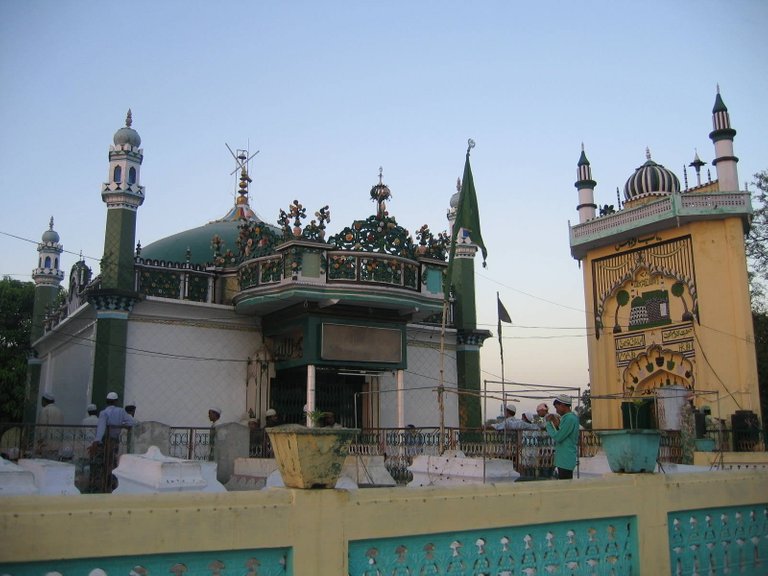Hazrat Shah Paran (Bengali: শাহপরান, Shah Farhan) was a Sufi holy person of the Suhrawardiyya and Jalalia arrange. It is said that he was the child of a sister of Shah Jalal and was conceived in Hadramaut, Yemen. He was an associate of his uncle, Shah Jalal, with whom he touched base in India. In 1303 AD, He partook in the campaign of Sylhet which was driven by Shah Jalal. After the triumph of Sylhet he built up a khanqah at Khadim Nagar in Dakshingarh Pargana, around 7 km far from Sylhet town, where he began Sufi otherworldly practices and exercises. He assumed a noteworthy part in proliferating Islam and setting up Muslim control in the Sylhet area.
It is hazy how and when he passed on, however he is covered close to his khanqah. For a considerable length of time, vast quantities of enthusiasts have been going by his tomb, a training which proceeds even today. On the fourth, fifth and sixth day of Rabi-ul-Awal, the Urs of Hazrat Shah Paran happens. His grave is situated in a high hillock and it is precisely protected at a place which is worked with blocks and encompassed by dividers. On the northern side of the grave there is an old tree, the branches and branchlets of which are reached out over the whole tomb.

The name of the tree is 'Ashagachh' (a tree of expectations). From a nearby perception of the leaves of the tree, it gives the idea that the tree has become out of a blend of the fig, mango and some other tree. Individuals eat the seeds of the figs reverentially in the expectation of disposing of ailments. Mangoes are likewise eaten with most extreme regard as Tabaruk. There is an antiquated mosque by the side of the tomb. The mosque has been modernized in 1989-91. Around 1500 faithful Muslims in a body would now be able to state their petitions there.
Nearby the primary tomb complex of Shah Paran, found in the East of Sylhet, is another tomb went to by admirers, that of Konya Shah. Legend has it that this adherent of the immense holy people was neither man nor lady. There is a lasting show of the life and times of this holy person. Contemporary sketches and pictures included at the tomb/display portray a man well on the way to be an eunuch. In spite of the fact that the first champions earned a noticeable part in Islamic history, standard Islam disregards worshiping holy people and eunuchs. A street connect over the Surma River, a traveler ship and a corridor of living arrangement at Shahjalal University of Science and Technology have all been named after Shah Paran.
Hazrat Shah Paran (the nephew of Hazrat Shah Jalal) was associated with lecturing Islam in Sylhet. Shah Paran's Mazaar (tomb) is situated in fringe of Sylhet town, in Major Tila. He was a buddy of his uncle, Shah Jalal, with whom he touched base in India. In 1303 AD, He participated in the endeavor of Sylhet which was driven by Shah Jalal. After the triumph of Sylhet he set up a khanqah at Khadim Nagar in Dakshingarh Pargana, around 7 km far from Sylhet town, where he began Sufi profound practices and exercises. He assumed a huge part in spreading Islam and building up Muslim control in the Sylhet locale.